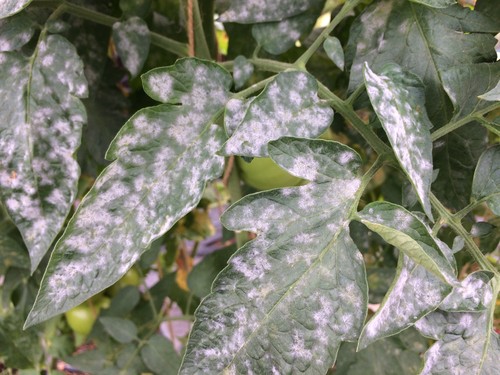White spots on plant leaves can be a common problem for indoor and outdoor gardeners. These white spots can be caused by a number of factors, including fungal infections, pests, or environmental stressors. It is important to identify the cause in order to effectively treat white spots on leaves.
Identifying the cause of white spots on leaves can be a challenge, as there are many potential culprits. However, some common causes of white spots include powdery mildew, spider mites, and nutrient deficiencies.
Once the cause of the white spots has been identified, it is important to take steps to prevent further damage to the plant and to treat the underlying issue.
Treating white spots on leaves can involve a variety of methods, depending on the cause of the problem. Some methods may include removing infected leaves, using organic or chemical treatments, or adjusting environmental factors such as humidity and lighting.
With proper care and attention, it is possible to effectively treat white spots on plant leaves and promote healthy growth.
Key Takeaways
- Identifying the cause of white spots on leaves is crucial for effective treatment.
- Preventive measures, such as proper watering and good air circulation, can help prevent white spots from forming.
- Treatment options for white spots on leaves may include removing infected leaves, using organic or chemical treatments, or adjusting environmental factors.
Similar posts:
Identifying White Spots on Leaves
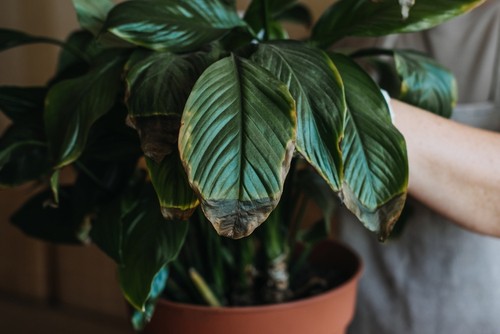
White spots on plant leaves are usually a sign of a fungal or bacterial disease. These spots can appear as circular white spots, white powdery spots, or white leaf spots. If you notice your plant’s leaves have white spots, it’s essential to identify the underlying cause and take action to prevent further damage.
Symptoms of white spots on plant leaves can vary depending on the type of disease. The most common symptom is the appearance of white spots on the top or bottom of the leaves. These spots can be powdery, fuzzy, or raised. In some cases, the leaves may turn yellow, wilt, or drop prematurely.
To identify the underlying cause of white spots on plant leaves, it’s essential to examine the leaves closely. Look for any other symptoms, such as brown or black spots, holes, or webbing. Check the underside of the leaves, as some diseases can affect this area first.
One common cause of white spots on plant leaves is powdery mildew. This fungal disease appears as a white, powdery growth on the surface of the leaves, which can cause yellowing and curling of the affected foliage.
Another cause of white spots on plant leaves is white leaf spot, a fungal disease that appears as small, circular white spots on the leaves.
It’s important to identify the underlying cause of white spots on plant leaves to determine the best course of action. Some diseases can be treated with fungicides, while others require more aggressive measures, such as pruning or removing the affected plant.
White Spots on Leaves – 4 Common Problems
White spots on plant leaves can be caused by a variety of factors, including fungal diseases, pests, and environmental stressors. Understanding the underlying cause of the white spots is crucial in determining the appropriate treatment. Here are some of the most common causes of white spots on plant leaves:
1. Fungal Diseases
Fungal diseases such as powdery mildew and downy mildew can cause white spots on plant leaves. Powdery mildew appears as a white, powdery coating on the leaves, while downy mildew causes yellow or brown spots with a downy texture.
These diseases are often caused by high humidity and poor air circulation. Treatment typically involves removing infected leaves and applying a fungicide.
2. Pests
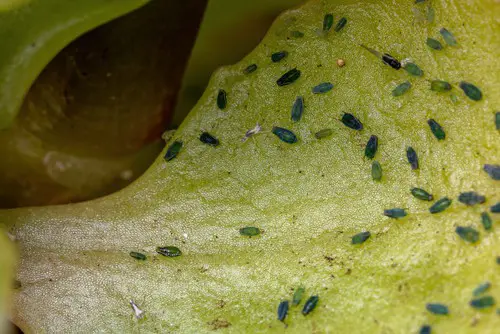
Mealybugs are a common pest that can cause white spots on plant leaves. These insects secrete a white, waxy substance that can cover the leaves and stems of plants. Treatment involves removing the insects by hand or using an insecticidal soap.
3. Environmental Stress
Plants that are under stress due to environmental factors such as high temperatures or low humidity may develop white spots on their leaves. This is often a sign that the plant is not receiving enough water or nutrients.
Treatment involves addressing the underlying cause of the stress and providing the plant with adequate water and nutrients.
4. Nutrient Deficiency
A lack of nutrients such as nitrogen, potassium, or magnesium can cause white spots on plant leaves. These spots may appear as small, white flecks or larger, irregular patches. Treatment involves providing the plant with the appropriate nutrients through fertilization.
Affected Plants
White spots on leaves can affect a wide variety of plants, including trees and shrubs, vegetables, and indoor plants. Powdery mildew, the most common cause of white spots on leaves, can infect over 10,000 plant species.
Vegetables such as turnip, mustard, radish, and horseradish are susceptible to powdery mildew, which can cause leaf distortion and yellowing. Broccoli, cauliflower, and cabbage are also frequent targets of this mildew.
Squash and cucumbers are also commonly affected, with the grayish-white fuzz usually appearing on leaf undersides, while yellow spots dot the top sides of leaves.
Powdery mildew can also infect nightshades such as eggplants, tomatoes, and peppers, as well as legumes like beans and peas. Roses and dahlias, as well as begonias, are also susceptible to powdery mildew, which can cause white powdery spots in the leaves.
Affected plants can suffer reduced growth, lower yields, and even death if the infection is severe. Therefore, it is crucial to identify and treat the problem promptly to prevent further damage.
Preventive Measures
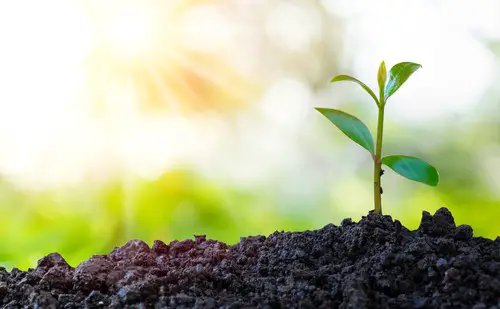
Preventing white spots on leaves is always better than treating them. Here are some preventive measures to keep your plants healthy and spot-free:
1. Control Measures
It’s important to control the spread of white spots on leaves. Remove any infected leaves as soon as you spot them. This will prevent the fungus from spreading to other parts of the plant. You can also use a fungicide to control the spread of the fungus. Make sure to read the instructions carefully before using any chemical treatments.
2. Care and Maintenance
Healthy plants are less susceptible to diseases. Make sure to provide your plants with the proper care and maintenance they need. This includes watering them regularly, fertilizing them, and providing them with enough sunlight. Make sure to also prune your plants regularly to promote growth and air circulation.
3. Watering and Wind
Overwatering your plants can lead to the growth of fungus and other diseases. Make sure to water your plants only when necessary and avoid getting the leaves wet. This will prevent the growth of fungus and other diseases.
If you live in a windy area, make sure to protect your plants from strong winds. Wind can damage the leaves and make them more susceptible to diseases.
4. Quality and Direct Sunlight
Make sure to choose high-quality plants from reputable sources. This will ensure that your plants are healthy and less susceptible to diseases. Direct sunlight is also important for the growth and health of your plants.
Make sure to provide your plants with enough direct sunlight, but avoid exposing them to too much direct sunlight. This can damage the leaves and make them more susceptible to diseases.
5. Dry Climate and Air Circulation
If you live in a dry climate, make sure to provide your plants with enough moisture. This will prevent the leaves from drying out and becoming more susceptible to diseases.
Proper air circulation is also important for the health of your plants. Make sure to provide your plants with enough space and proper ventilation to promote air circulation. This will prevent the growth of fungus and other diseases.
By following these preventive measures, you can keep your plants healthy and spot-free.
Treating White Spots on Leaves

White spots on leaves can be caused by a variety of factors, including powdery mildew, downy mildew, and other fungal diseases. Fortunately, there are several effective treatments available to help get rid of these unsightly spots and keep your plants healthy.
One of the most effective treatments for white spots on leaves is the use of fungicides. Fungicides are chemical compounds that are designed to kill or prevent the growth of fungi.
There are many different types of fungicides available, including neem oil, copper, sulfur, and potassium bicarbonate. Each type of fungicide works differently, so it is important to choose the right one for your specific needs.
Another effective treatment for white spots on leaves is the use of baking soda. Baking soda is a natural fungicide that can help to kill powdery mildew and other fungal diseases. To use baking soda as a treatment, simply mix 1 tablespoon of baking soda with 1 gallon of water and spray the solution onto the affected leaves.
In addition to fungicides and baking soda, there are several other treatments that can help to get rid of white spots on leaves. These include removing infected leaves, improving air circulation around the plant, and avoiding overwatering.
When treating powdery mildew, it is important to act quickly to prevent it from spreading to other plants. Powdery mildew can be particularly difficult to treat, so it is important to use a fungicide treatment as soon as possible.
In addition to fungicides, there are several other treatments that can help to get rid of powdery mildew, including neem oil, sulfur, and potassium bicarbonate.
Removal and Care of Infected Leaves
When white spots appear on leaves, it is important to take action to prevent further damage. One of the first steps is to remove any infected leaves. This can be done by carefully cutting off the affected leaves with a pair of clean scissors or pruning shears.
It is important to dispose of the infected leaves in a sealed bag to prevent any new infections from spreading.
When dealing with houseplants, it is important to isolate the infected plant to prevent the spread of the disease. If the plant is overwintering indoors, it is important to keep the humidity levels low to prevent the growth of powdery mildew.
To prevent new infections, it is important to keep the undersides of leaves dry. When watering, it is best to water the soil directly and avoid getting water on the leaves. If the plant is in a humid environment, such as a bathroom, it may be necessary to move it to a drier location.
In addition to removing infected leaves, it is important to care for the remaining leaves to prevent further damage. This can be done by regularly inspecting the plant for new infections and treating them promptly.
It is also important to provide the plant with proper nutrition and care to help it recover from the damage caused by the disease.
Additional Tips for Healthy Plants

In addition to treating white spots on leaves caused by fungal diseases or pests, there are several steps you can take to ensure that your plants remain healthy and vibrant.
1. Proper Foliage Care
One of the most important things you can do to keep your plants healthy is to take good care of their foliage. Make sure to regularly remove any dead or damaged leaves, as well as any weeds or other debris that may be present. This will help to prevent the spread of pathogens and pests, which can weaken or even kill your plants.
2. Preventing Fungal Diseases
To prevent fungal diseases from taking hold in your plants, it is important to maintain good growing conditions. This includes ensuring that your plants have adequate air circulation, as well as proper watering and drainage.
You should also avoid overcrowding your plants, as this can create pockets of stagnant air that are ideal for fungal growth.
3. Natural Remedies
If you prefer to use natural remedies to treat white powder on plant leaves, there are several options available. One popular method is to use a mixture of milk and water, which can help to kill off fungal spores and prevent further growth.
Another option is to introduce beneficial insects, such as ladybugs or lacewings, which can help to control mealybug populations and other pests.
4. Pesticides
If natural remedies do not work or if the infestation is severe, you may need to resort to using pesticides. However, it is important to choose a product that is specifically designed for the type of pest or fungus that is affecting your plant, and to follow all instructions carefully.
Some pesticides can be toxic to humans and pets, so be sure to use them only as directed and to take appropriate safety precautions.
5. Growing Season
Finally, it is important to be aware of the growing season for your plants and to take appropriate steps to protect them during periods of extreme weather. This may include providing shade or extra water during hot summer months, or covering your plants to protect them from frost during the winter.
By following these tips and taking good care of your plants, you can help to prevent white spots on leaves and ensure that your plants remain healthy and vibrant throughout the growing season.
Frequently Asked Questions
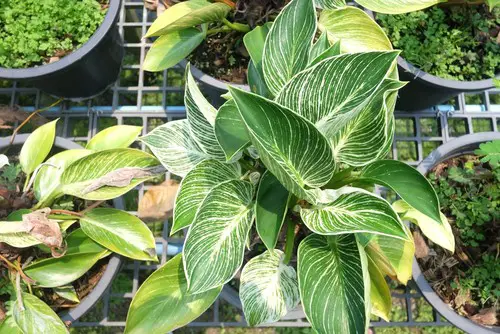
What causes white spots on plant leaves?
White spots on plant leaves can be caused by a variety of reasons, including fungal infections, pests, and environmental factors. Fungal infections such as powdery mildew and downy mildew can cause white spots on leaves.
Pests such as spider mites and whiteflies can also cause white spots. Environmental factors such as high humidity, low light, and temperature changes can also lead to white spots on plant leaves.
How do I identify the type of white spots on my plant leaves?
To identify the type of white spots on plant leaves, it is important to examine the leaves closely. Fungal infections such as powdery mildew and downy mildew typically appear as white, powdery spots on the leaves.
Pests such as spider mites and whiteflies can cause white spots that are more irregular in shape. Environmental factors such as high humidity can cause water droplets to form on the leaves, which can also appear as white spots.
What are some natural remedies for treating white spots on plant leaves?
There are several natural remedies for treating white spots on plant leaves. One effective method is to use a mixture of water and baking soda, which can help to control fungal infections.
Neem oil is also an effective natural remedy for controlling pests such as spider mites and whiteflies. Additionally, increasing air circulation and reducing humidity levels can help to prevent the growth of fungal infections.
Can white spots on plant leaves be a sign of a larger problem?
Yes, white spots on plant leaves can be a sign of a larger problem. Fungal infections and pest infestations can weaken the plant and make it more susceptible to other diseases.
Additionally, environmental factors such as low light and temperature changes can stress the plant, which can also make it more vulnerable to disease.
Are there any preventative measures I can take to avoid white spots on plant leaves?
Yes, there are several preventative measures you can take to avoid white spots on plant leaves. These include maintaining proper humidity levels, providing adequate air circulation, and avoiding overwatering.
Additionally, using disease-resistant plant varieties and practicing good hygiene, such as cleaning gardening tools and removing dead plant material, can also help to prevent the growth of fungal infections.
What are the best chemical treatments for white spots on plant leaves?
Chemical treatments for white spots on plant leaves can vary depending on the type of infection or pest infestation. Fungicides such as copper-based products and sulfur can be effective for controlling fungal infections.
Insecticides such as pyrethroids and neonicotinoids can be effective for controlling pest infestations. However, it is important to follow the instructions carefully and use chemical treatments as a last resort, as they can be harmful to beneficial insects and the environment.

Hey, I’m Lisa and I’ve been an avid gardener for over 30 years. I love writing, talking and living in the garden! Feel free to connect with me on my socials below

